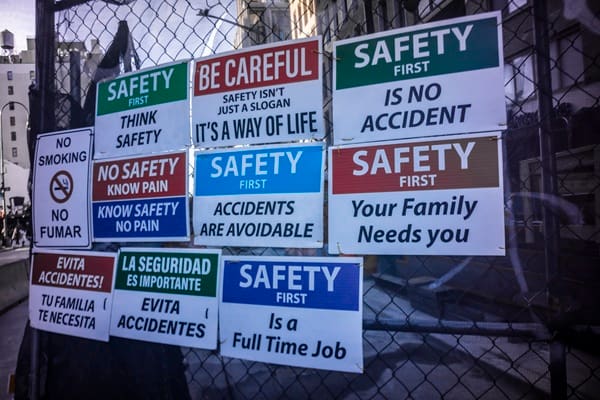In recent years, London has witnessed major changes in building-safety laws designed to make homes, offices, and public spaces safer. Following tragic incidents such as the Grenfell Tower fire, authorities recognised that stronger rules were needed to prevent similar disasters. These new regulations aim to ensure that every stage of a building’s life — from design and construction to long-term management — meets higher safety standards.
For a city as dense and complex as London, where new developments rise alongside older structures, these rules have become a central part of how buildings are planned and approved. The focus is no longer just on aesthetics or cost but on how a building can protect its residents and users in case of fire or structural emergencies.
The New Framework for Building Safety
The UK government introduced several key pieces of legislation to tighten building-safety controls. Among the most influential are the Fire Safety (England) Regulations 2022 and the Building Safety Act 2022. These laws set out detailed responsibilities for developers, building owners, and managers, particularly for high-rise and multi-occupied residential buildings.
Under these regulations, owners and responsible persons must share building and floor plans with fire and rescue services, maintain firefighting equipment, and check fire doors regularly. They must also ensure that residents are aware of evacuation routes and that firefighting lifts are tested consistently. These measures are especially vital in London, where thousands of people live in tall, shared buildings.
To understand the full legal requirements, building owners can review official government guidance on gov.uk.
Raising the Bar for Construction and Design
For developers and architects in London, the new standards mean fire safety must be integrated from the earliest design stages. Approved Document B — the section of the Building Regulations that deals with fire safety — has been updated to restrict the use of combustible materials in external walls and cladding systems. New residential and commercial buildings are now required to use non-combustible materials, improving protection against external fire spread.
Designers must also consider access routes for firefighters, compartmentation between flats, and fire-resistant escape corridors. These technical elements ensure that even in an emergency, people have time and safe pathways to exit. London’s planning authorities are strict about these requirements, often requesting detailed fire-safety statements as part of the planning application process.
How These Regulations Affect Building Owners and Managers
For existing buildings, especially older ones across London, compliance doesn’t end after construction. Owners must maintain safety systems and prove that they remain effective. This includes fire doors, alarms, emergency lighting, and evacuation signage. In many cases, landlords are now required to appoint a designated “responsible person” who oversees all safety procedures.
In addition, building owners must keep accurate records of any upgrades, risk assessments, or maintenance activities. The local fire authority can request these records during inspections. Non-compliance can lead to significant fines or even criminal charges. These rules are in place to make sure that safety is not treated as a one-time task but as an ongoing responsibility.
The impact on residents and building occupants
For people living or working in London, the benefit of these new rules is greater peace of mind. Buildings are being constructed and maintained to higher standards, and emergency information is more transparent. High-rise residents now have clearer communication about fire-safety measures, and regular checks on alarms and evacuation routes reduce the likelihood of system failures.
In a city with a mix of old housing stock and modern towers, this consistency is critical. The London Fire Brigade has also stepped up enforcement, providing guidance and carrying out inspections to make sure the rules are followed across all boroughs.
The importance of continuous safety checks
Ute Grabowsky/DPA Picture Alliance/Avalon
Even with modern regulations, maintaining safety depends on regular assessments and improvements. Building conditions change over time, and so do the ways people use spaces. Routine inspections help identify problems before they become serious. Services such as a fire safety risk assessment play a crucial role in evaluating how well a building’s fire-protection systems perform and whether additional safety measures are required.
For London’s property owners and managers, this process helps ensure compliance while also protecting lives. It’s a proactive approach that complements the government’s efforts to make the capital’s buildings safer.
Looking ahead: London’s evolving safety culture
As new regulations continue to evolve, London is moving toward a culture where safety is built into every stage of a building’s life. This cultural shift is supported by improved communication between developers, residents, and emergency services. The Building Safety Regulator, created under the Building Safety Act, will continue to oversee how standards are applied and ensure that lessons from past incidents shape future construction practices.
Over the coming years, we can expect even stricter oversight of materials, fire-safety management, and building maintenance in London. The ultimate goal is to make the city’s homes and workplaces not just compliant but genuinely resilient in the face of emergencies.
Conclusion
In summary, new building regulations are transforming how London approaches safety in its built environment. From fire-resistant materials and better design standards to stronger maintenance and management responsibilities, the shift represents a major step forward in protecting lives. For developers, landlords, and residents alike, these regulations encourage awareness, accountability, and long-term safety planning.
To explore another aspect of workplace and personal safety technology in London, you can read this insightful article on. “Man Down Alarms: How They Work and Why Every Lone Worker Needs One”

